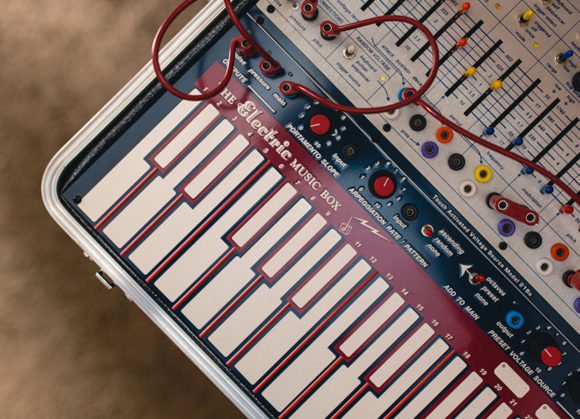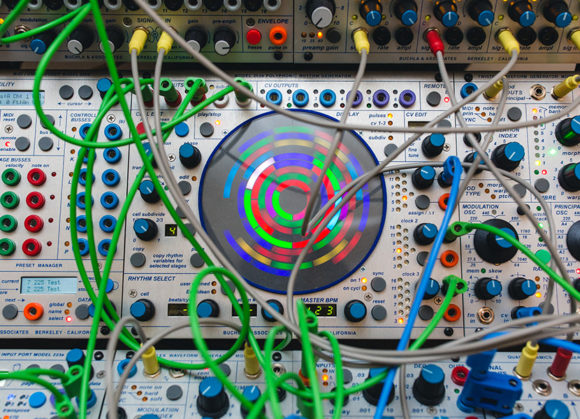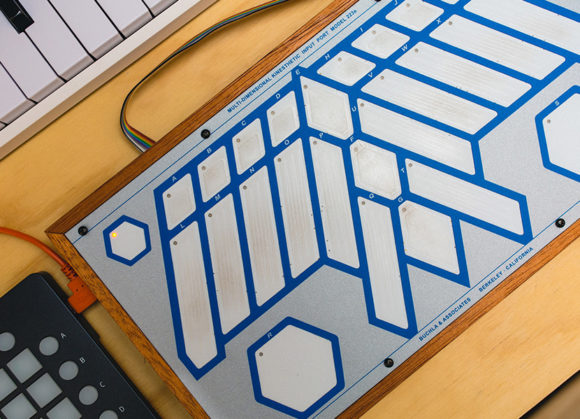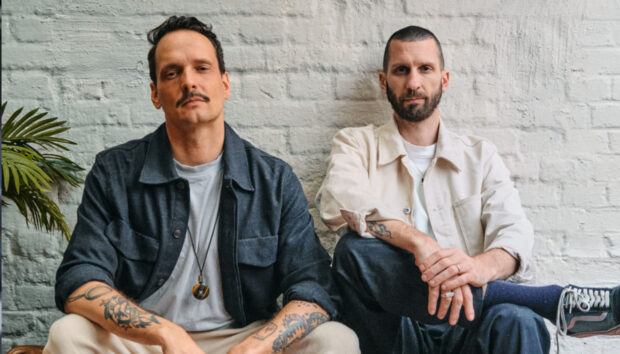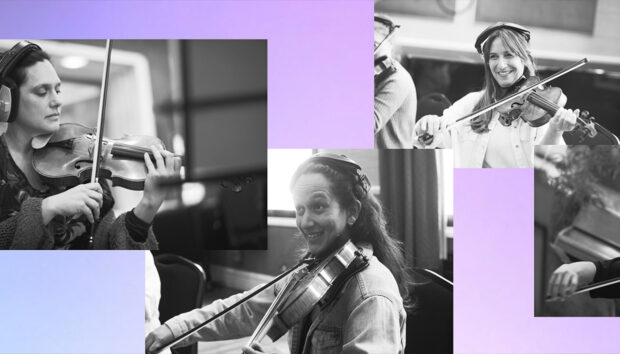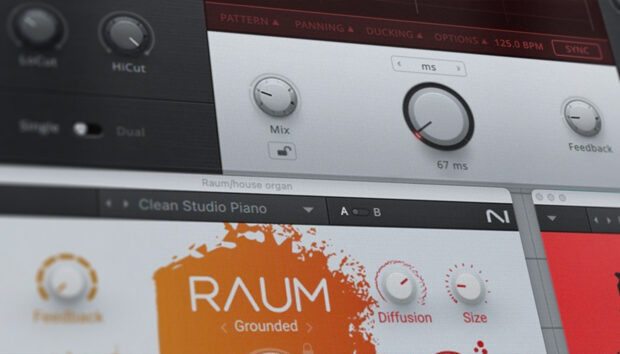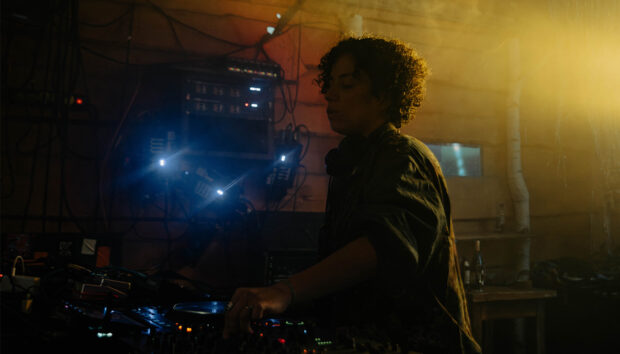Kaitlyn Aurelia Smith is known for conjuring vibrant, kaleidoscopic electronic music that draws on the more tangible and organic characters of synthesizers. Having grown up in the natural serenity of Orca Island in the Pacific Northwest, Smith went on to study composition and sound engineering at the esteemed Berklee School of Music.
But it wasn’t until she was introduced to the Buchla 100 synthesizer by fellow composer, Terry Riley, that Smith began developing her folk-leaning, synthesized compositions that she’s famed for today. Having released four studio LPs, Smith recently signed to Ghostly International, and joins Caribou on tour through North America and Europe this year.
Smith recently got her hands on our next-generation synth MASSIVE X – and we asked her to create her own patch from scratch. The result is Bellows, a dreamy, weightless pad full of the organic textures we’ve come to expect from her music. Hear the demo track she created, then read on below to find out how she got on with MASSIVE X, and her approach to sound design tools in general.
Now here’s the challenge: Create a track with Kaitlyn Aurelia Smith’s patch, and impress our judges. Don’t have MASSIVE X yet? Download the free demo here.
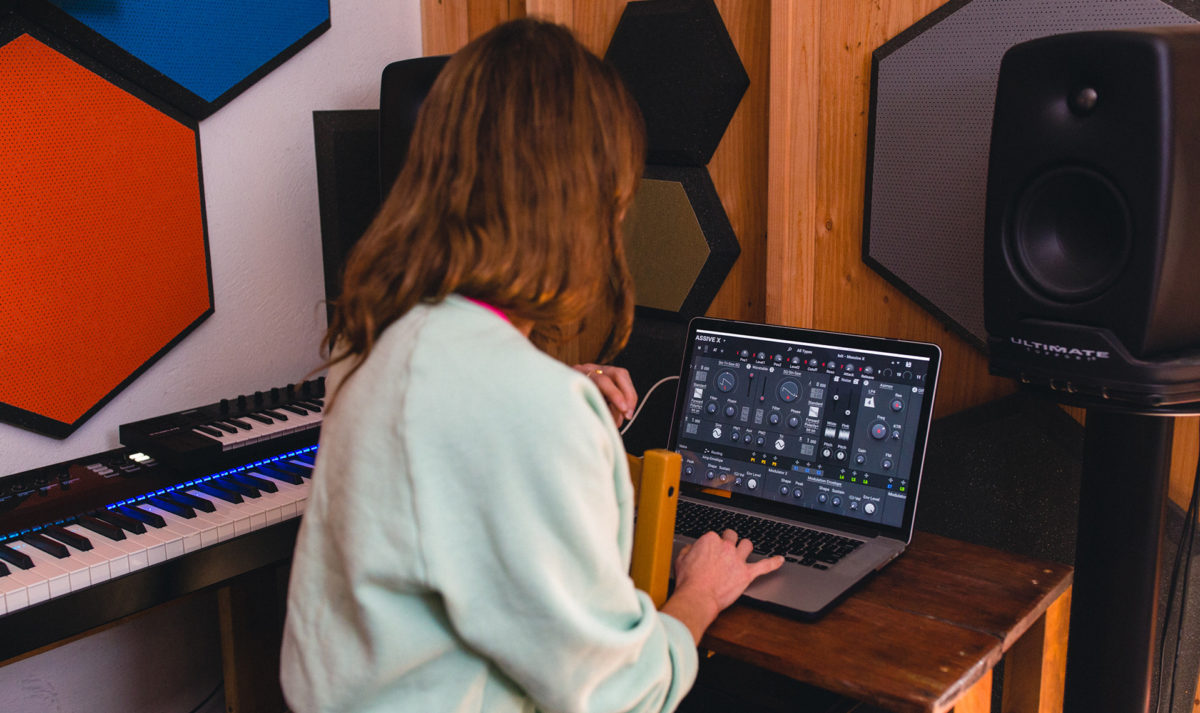
What was your first experience with Massive?
I actually didn’t use Massive 1 much. I used a few other NI plugins, but my first experience with Massive X was kind of the same thing that I do with most soft synth plugins, which is open it and, quickly go through all the presets just to understand how the panels change. Because a lot of them have all these hidden things where if you touch this one corner, all of the sudden a thing opens and you wouldn’t know it if you didn’t explore all the presets. And I definitely had that experience with Massive X, especially when I was going through all the presets, there’s a lot of hidden doors.
Would you say that Massive X’s deep complexity can be intimidating? Or was it user-friendly once you figured out those panels?
I think it’s a combo of both. I think it’s user-friendly in the way that it feels like you can explore it a lot and get really fun sounds out of it as you’re exploring it.
But I also think it’s intimidating to fully understand how it works.
Do you think people in general get intimidated by deeper synths? Or is it color by numbers, and get inspired on how it looks?
It’s different for different people, for me, I work really well with understanding pathways. And I feel like it’s because I played a lot of chess when I was younger. The way that I make music is by constantly thinking 10 steps ahead while keeping track of all the pathways and how they’re gonna meet. And with soft synths you don’t really get to see the pathways in a 3d way…so it’s really intimidating for me personally because I don’t know all the things that are going on and that I don’t know how to keep track of all of them. I’m just presented with a 2D image.
With Massive, Reaktor, or Max, you can sort of wire digitally.
I definitely gravitate towards. But I also have a hard time with the 2D version of pathways, because it’s a different part of my brain.
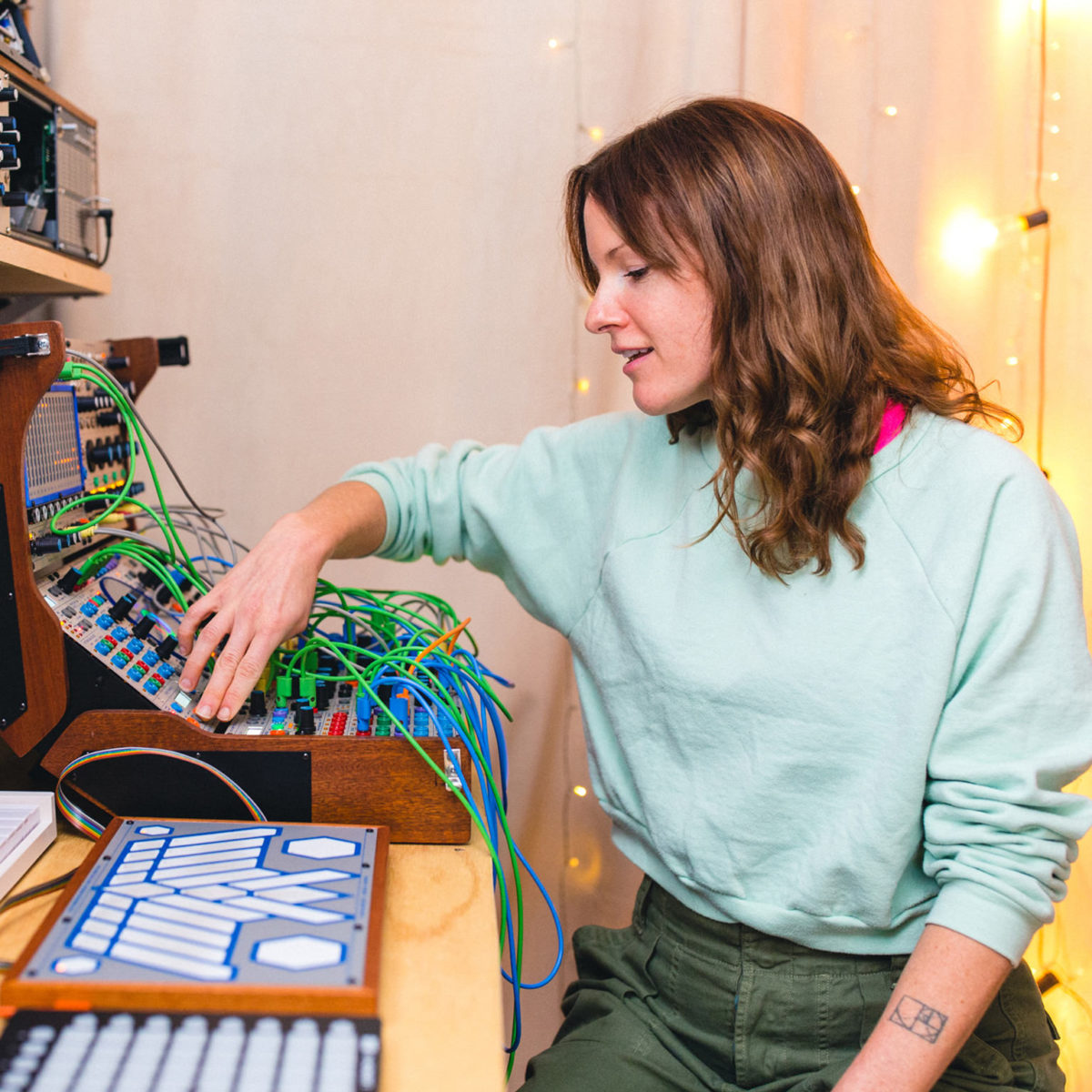
That’s interesting. And I like the chess comparison. I didn’t know you were a chess player. Do you still play chess?
Yeah. I love it. Not very often, but I love it!
Do you play chess old school with the board or on a computer or tablet? I guess it’s similar to making music with software versus hardware.
Yeah. I really think that there’s a difference. I had a project where I had to spend a lot of time on the computer researching photos to get references together, and I noticed that the front part of my brain actually physically hurt from being in front of the computer. And when I’m playing synths I feel a different part of my brain.
That’s really interesting. I’ll go back to the word “fashion” because there was a time where people didn’t want hardware as much. They wanted it on a screen, and now it seems it’s the opposite. Maybe that parlays to the next question, which is, for a lot of people who don’t know your previous work, you’re kind of well-known for hardware and modular stuff. So maybe if you could talk a little bit about how you go from hardware synths into a sort of digital modular version of Massive X or Reaktor.
It kind of depends on where I’m at in the process – and this is just how I personally work – if I’m sketching out the harmony and the melodic information, I tend to do that like with my hand and write notation, and if I’m figuring out how I would play something live or processing sound then I like to do it in hardware, and if I’m arranging and doing editing then I do it in the computer. And I really liked Massive X for like, if I’m traveling… or more recently I’ve discovered that I really like when you mix soft synths with analog synths (with the hardware).
Terms and conditions
The aforementioned competition is being conducted by Sounds Unlimited, Inc. (“Metapop”). By entering the competition, participants agree to these terms and conditions and Metapop’s Terms of Service ( https://metapop.com/pages/terms).
All personal information is protected by privacy and data protection laws and will not be shared with third parties.
Participants must be 13 years of age or older. Employees of the Native Instruments group are not eligible for prizes.
By uploading a track to the competition page on Metapop, participants can win Native Instruments prizes as the “Grand Prize”.
To be eligible to win, your submissions must be over two minutes and use the provided preset. Wavetables may not be changed, but modulation and other parameters are free to use as you wish. Entries are to be submitted as an MP3 or WAV file at Metapop. Content that uses material to which you don’t own rights (including rights granted to collection societies) will be discredited.
Winners will be determined by a panel of judges based on creative and technical merits.
Winners will be notified by email, and are required to notify Metapop that they accept the prize within one week after receiving the notification email. Otherwise they forfeit the prize and Metapop reserves the right to choose another winner. The winners have to be prepared to show project files to prove original sounds were used.
A cash payout of the prize is ruled out.
The right of appeal is excluded.









